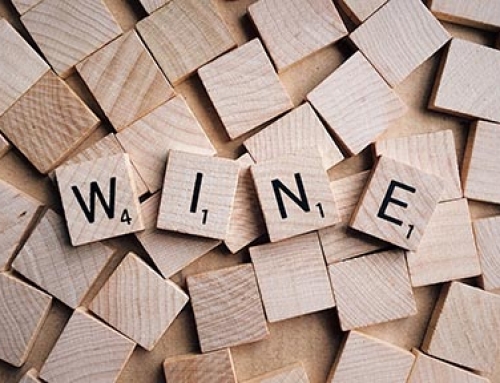Aging is most noticeably the process of the tannins in the wine reacting with other components until they are unable to stay in solution, where upon they become sediment (precipitation). While this is happening, the aromas of the grape are replaced by the bouquet of the aged wine (reductive aromas). At the same time, the color in the wine either lightens if it is a red wine (the anthocyanins – red pigments – bond to the sediment) or in white wine the color turns brown (oxidizes, just like a bite out of an apple – reds do this too, but it is harder to see).
So a hard, tannic red wine will, with luck, become softer in the mouth; less fruity, and more wood/leather in the nose, and generally more complex and full of nuance as it ages. An oaky white wine will become less fruity in the nose, more golden in color, and more complex and subtle in the taste (more caramel and less fruit flavors).
It is impossible to make general rules about how long any given wine will age. For example, while it is certain that many Cabernet Sauvignons will indeed age 5-7 years, there are plenty that will not age at all (the fruitier, less expensive styles) and more that will age for decades (the richer, more expensive selections).
The factors that allow a wine to age are quite complex, but here are a couple of rules of thumb:
- The wine must have a fairly high level of Tannin to age at all.
- All the tannin in the world is no good if the wine has no Acidity to keep it fresh tasting.
- Acidity and tannin are all well and good, but it is fruit that makes wine taste good, and if there is not enough fruit in the wine, then when it ages it will taste like nothing.
- The fuller a wine in all 3 of these components, the longer it will age.
The tannins can either come from the grapes themselves (skins and seeds) or (especially in the case of white) from being aged in wood, usually oak. Grape tannins are more subtle, but often as strong, and rarely as astringent (mouth drying) as oak tannins. Grape tannins are better than oak when it comes to aging, hence grapes like Cabernet Sauvignon, with thicker skins, tend to have better aging potential.
The acidity, while it can be added (illegal in many parts of the world), like the fruit, primarily comes from the grape itself. Acidity can be balanced in the winemaking process, but the best vintages have a perfect balance of tannin, fruit and acidity, in the grape itself.
More generalities: Cab ages best. Pinot ages surprisingly well, if it is a great Pinot. Chardonnay, when it is oaky, not only ages, but really needs a few years to even out. Merlot needs high levels of Cab in the blend to age well, Syrah rarely ages particularly well, except for true Rhones.
Temperature
Keep your wine at 55F in order to age it. Wine ages more quickly at 70F+ but the resulting product is less complex, so you could say that wine actually falls apart faster at 70F than at 55F. Keep your wines at a level 55F and they will age slowly and perfectly.
The most important way to tell if your wine is ready to drink, is to taste a bottle. This seeming paradox is one of the best reasons to buy wine by the case.


I loved the flavor and body of this wine and I am not a red wine dirkner. I prefer whites but this one was awesome. No oaky taste at all! I purchased this since my red collection is very limited!
I really eojyned this wine! Wonderful blend and what a great finish. Fruit forward but not sweet and yet not dry at all. This is a great wine to keep on hand to please everyone!